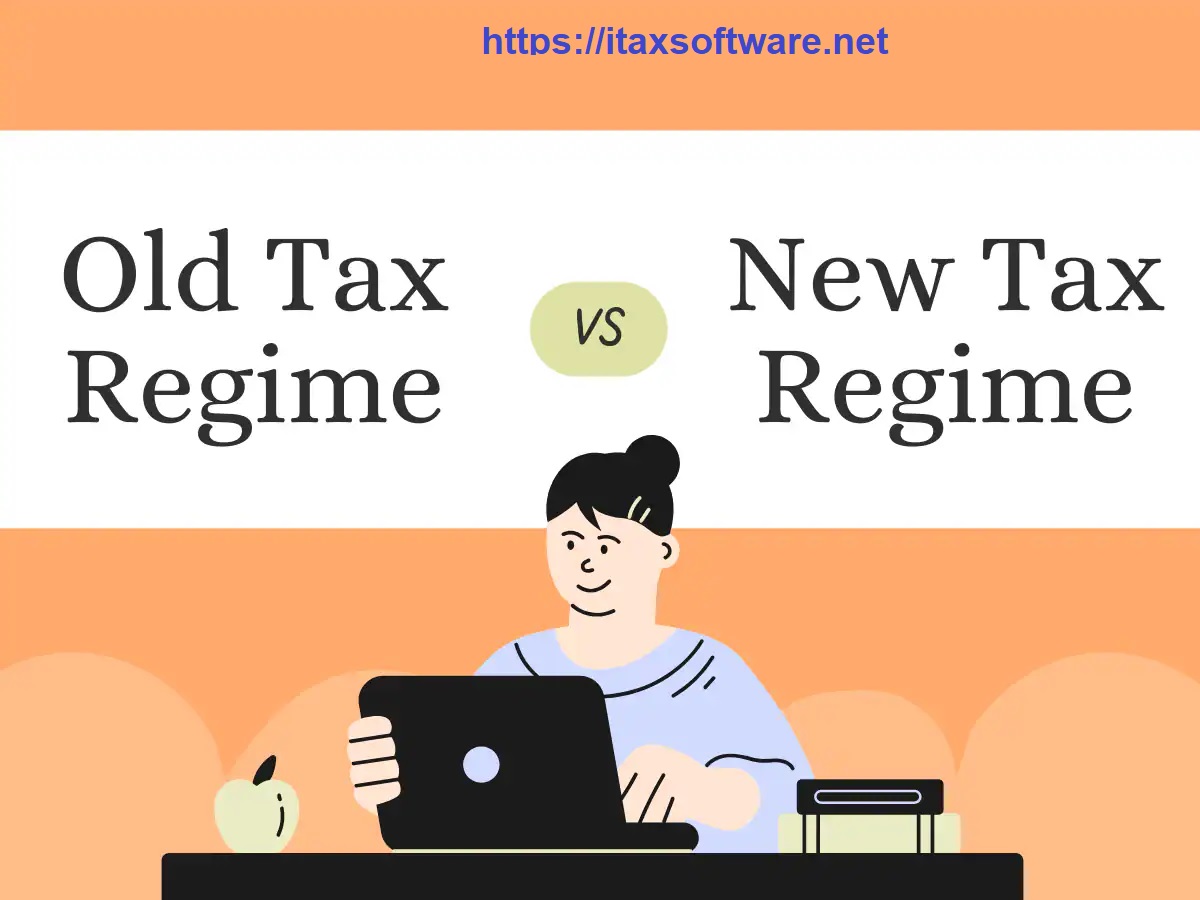Tax planning in 2025–26 has taken centre stage, especially after the Union Budget 2025 introduced significant changes, including tax exemption for income up to ₹12 lakh. As a new financial year begins, salaried employees are once again faced with the crucial decision: should they pick the old tax regime with multiple deductions or the new regime with simplified, lower tax rates?
Think of it as choosing between two different paths—one full of shortcuts and detours (old regime with deductions) and another with a straight road but fewer stops (new regime with simplicity). The decision you make will directly affect how much tax you pay. Let’s break it down step by step.
Table of Contents
| Sr# | Headings |
| 1 | Overview of Tax Planning 2025–26 |
| 2 | What Changed in Budget 2025 |
| 3 | Why Choosing a Tax Regime Matters |
| 4 | New Tax Regime Slab Rates for FY 2025–26 |
| 5 | Key Features of the New Tax Regime |
| 6 | Deductions Allowed in the New Regime |
| 7 | Old Tax Regime Slabs Explained |
| 8 | Deductions and Exemptions in the Old Regime |
| 9 | Comparing Old vs New Tax Regime |
| 10 | Income Thresholds for Choosing Wisely |
| 11 | Tax Planning for Salaried Employees |
| 12 | Tax Planning for Self-Employed Professionals |
| 13 | Marginal Relief and Rebate Under Section 87A |
| 14 | Common Mistakes to Avoid in Tax Planning 2025–26 |
| 15 | Final Thoughts on Picking the Perfect Regime |
1. Overview of Tax Planning 2025–26
Tax planning means making informed financial decisions to reduce tax liability legally. In 2025–26, taxpayers face a fresh challenge: deciding between the newly updated regime and sticking to the traditional old regime.
2. What Changed in Budget 2025
The Union Budget 2025, presented on February 1, introduced zero tax liability for income up to ₹12 lakh under the new regime. This change came into effect on April 1, 2025. The rebate under Section 87A increased from ₹25,000 to ₹60,000, making it more attractive for middle-income earners.
3. Why Choosing a Tax Regime Matters
Employers require employees to declare their tax preference for TDS. Picking the wrong regime could mean higher monthly deductions and a lower take-home salary. Therefore, choosing wisely is crucial for financial stability.
4. New Tax Regime Slab Rates for FY 2025–26
- Up to ₹4,00,000 – Nil
- ₹4,00,001 – ₹8,00,000 – 5%
- ₹8,00,001 – ₹12,00,000 – 10%
- ₹12,00,001 – ₹16,00,000 – 15%
- ₹16,00,001 – ₹20,00,000 – 20%
- ₹20,00,001 – ₹24,00,000 – 25%
- Above ₹24,00,000 – 30%
Thanks to the rebate, the net tax up to ₹12 lakh is zero.
5. Key Features of the New Tax Regime
- Simplified slab rates.
- Higher rebate under Section 87A.
- Zero tax for taxable income up to ₹12 lakh.
- Limited deductions compared to the old regime.
6. Deductions Allowed in the New Regime
Although simplified, the new regime still allows some deductions:
- Section 24(b): Interest on housing loan for rental property.
- Section 80CCD(2): Employer’s contribution to NPS (up to 14% of salary).
7. Old Tax Regime Slabs Explained
- Income up to ₹2.5 lakh – Nil
- ₹2.5 lakh – ₹5 lakh – 5%
- ₹5 lakh – ₹10 lakh – 20%
- Above ₹10 lakh – 30%
8. Deductions and Exemptions in the Old Regime
The old regime offers multiple tax-saving tools:
- Section 80C: Up to ₹1.5 lakh for PPF, ELSS, LIC, etc.
- Section 80D: Health insurance premium deductions.
- Section 24(b): ₹2 lakh for home loan interest.
- HRA and LTA exemptions.
9. Comparing Old vs New Tax Regime
- Old regime: Higher rates but multiple deductions.
- New regime: Lower rates with fewer deductions.
- The choice depends on your investment habits and financial goals.
10. Income Thresholds for Choosing Wisely
- Below ₹7 lakh: The New regime is better due to the rebate.
- ₹7–10 lakh: Old regime may help if deductions are high.
- Above ₹10 lakh: Depends on deductions. If more than ₹5 lakh, the old regime is better. Otherwise, the new regime saves more.
11. Tax Planning for Salaried Employees
Employees must decide at the start of the year. If they invest heavily in PPF, insurance, or housing loans, the old regime may be advantageous. If not, the new regime ensures simplicity.
12. Tax Planning for Self-Employed Professionals
For freelancers and business owners, the new regime is often easier because they may not claim many deductions. However, those with high investments should evaluate both.
13. Marginal Relief and Rebate Under Section 87A
The rebate under Section 87A ensures zero tax liability up to ₹12 lakh. Marginal relief ensures taxpayers just above this limit don’t pay excessive tax compared to those just under it.
14. Common Mistakes to Avoid in Tax Planning 2025–26
- Declaring the wrong regime without calculations.
- Ignoring employer contributions like NPS.
- Overestimating deductions.
- Not reviewing financial goals before choosing.
15. Final Thoughts on Picking the Perfect Regime
Tax planning 2025–26 is all about balance. If you are a deduction-heavy taxpayer, the old regime may be more rewarding. If you prefer simplicity with zero tax up to ₹12 lakh, the new regime is a smart choice. Remember: the right choice ensures maximum savings and peace of mind.
FAQs
- What is the maximum income exempt from tax in FY 2025–26?
Income up to ₹12 lakh is tax-free under the new regime due to the enhanced rebate. - Can I switch between the old and new tax regimes?
Yes, salaried employees can choose every financial year, while self-employed can switch only once. - Which regime is better for someone earning ₹15 lakh annually?
It depends on deductions. If you claim over ₹5 lakh deductions, old regime is better; otherwise, the new regime saves more. - Do I get HRA and LTA exemptions under the new regime?
No, such exemptions are available only under the old regime. - What should I consider before choosing a regime in 2025–26?
Check your income, available deductions, and financial goals. Compare tax outflow under both regimes before deciding. - Can I claim Section 80C deductions in the new regime?
No, the new regime does not allow Section 80C deductions like PPF, ELSS, or LIC premiums. - Is the standard deduction available in both regimes?
Yes, salaried taxpayers can claim the standard deduction of ₹75,000 under both regimes. - If my salary is ₹12.5 lakh, will I still pay tax in the new regime?
Yes, but very little. With the standard deduction of ₹75,000, your net taxable income drops to ₹11.75 lakh—fully tax-free due to the ₹60,000 rebate. - Does the new regime allow home loan benefits?
Yes, but only for interest on housing loans for rental properties. For self-occupied homes, the deduction is available only in the old regime.
Certainly! Let’s continue and expand the article with more depth and add a comparison table for clarity, along with some practical examples for readers.
Old Regime vs New Regime: A Comparison Table
| Feature | Old Tax Regime | New Tax Regime (FY 2025–26) |
| Basic Exemption Limit | ₹2.5 lakh | ₹4 lakh |
| Tax-Free Income Threshold | ₹5 lakh (with rebate) | ₹12 lakh (with rebate) |
| Slab Rates | 5%, 20%, 30% | 5%, 10%, 15%, 20%, 25%, 30% |
| Deductions Available | Yes (80C, 80D, HRA, LTA, 24(b), etc.) | Limited (Employer NPS, housing loan on rental property) |
| Standard Deduction | ₹75,000 | ₹75,000 |
| Best For | Taxpayers with high deductions and investments | Taxpayers with minimal deductions or income up to ₹12 lakh |
| Filing Complexity | More documentation due to claims | Easier and faster filing |
Practical Examples of Tax Planning 2025–26
Example 1: Salaried Individual with Income ₹9 lakh
- Old Regime: Claims deductions of ₹2 lakh (80C + 80D + 24(b)). Taxable income reduces to ₹7 lakh.
- New Regime: Income taxed at lower rates, but deductions limited.
👉 If deductions are less than ₹1.5 lakh, the new regime is cheaper. If deductions are above ₹2 lakh, the old regime works better.
Example 2: Salaried Individual with Income ₹14 lakh
- Old Regime: With deductions of ₹3.5 lakh, the taxable income becomes ₹10.5 lakh.
- New Regime: Income taxed at 10%, 15%, and 20% slabs.
👉 For someone with a home loan interest + investments + insurance, the old regime can save more. Otherwise, the new regime is simpler.
Example 3: Freelancer with Income ₹18 lakh
- Old Regime: Few deductions available. Final tax may be higher.
- New Regime: Straightforward calculation, no complex documentation.
👉 Freelancers usually benefit from the new regime due to simplicity.
Step-by-Step Guide to Choosing the Right Regime
- Calculate your total income (salary, interest, rental, etc.).
- List all possible deductions (80C, 80D, home loan interest, etc.).
- Compute tax under the old regime after deductions.
- Compute tax under the new regime without deductions.
- Compare results and pick the lower tax option.
Tip: Use an online tax calculator or an employer’s TDS projection tool to avoid manual errors.
Why Tax Planning 2025–26 Is More Important Than Ever
The Budget 2025 widened the gap between the old and new regimes. With zero tax up to ₹12 lakh, many middle-class taxpayers will naturally lean toward the new regime. However, for higher-income groups with big deductions, the old regime still holds value.
Choosing without calculation is like picking a train without checking its destination—you may end up where you didn’t want to go. Careful tax planning ensures your financial journey is smooth.
Pro Tips for Smart Tax Planning in 2025–26
- Start Early: Don’t wait until March. Plan investments in April.
- Track Expenses: Keep receipts of insurance, loan interest, and donations.
- Use Employer Benefits: Maximise NPS contributions and HRA.
- Review Annually: A regime that suits you this year may not fit next year.
- Seek Advice: If confused, consult a tax advisor before filing.



